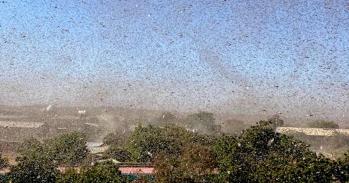
New research reveals that velcro-like cells on plant petals play a crucial role in helping bees grip flowers.
New research reveals that velcro-like cells on plant petals play a crucial role in helping bees grip flowers.
Many of our common garden flowers have beautiful conical cells if you look closely – roses have rounded conical petal cells while petunias have really long cells, giving petunia flowers an almost velvety appearance, particularly visible in the dark-coloured varieties.
Dr Beverley Glover
As gardeners get busy filling tubs and borders with colourful bedding plants, scientists at the Universities of Cambridge and Bristol have discovered more about what makes flowers attractive to bees rather than humans. Published today in the British Ecological Society's journal Functional Ecology, their research reveals that Velcro-like cells on plant petals play a crucial role in helping bees grip flowers – especially when the wind gets up.
The study focuses on special cells found on the surface of petals, whose stunning structure is best seen under an electron microscope. According to lead author, Dr Beverley Glover: “Many of our common garden flowers have beautiful conical cells if you look closely – roses have rounded conical petal cells while petunias have really long cells, giving petunia flowers an almost velvety appearance, particularly visible in the dark-coloured varieties.”
Glover's group previously discovered that when offered snapdragons with conical cells and a mutant variety without these cells, bees prefer the former because the conical cells help them grip the flower. “It's a bit like Velcro, with the bee claws locking into the gaps between the cells,” she explains.
Compared with many garden flowers, however, snapdragons have very complicated flowers; bees have to land on a vertical face and pull open a heavy lip to reach the nectar so Glover was not surprised that grip helps. But she wanted to discover how conical cells help bees visiting much simpler flowers.
“Many of our garden flowers like petunias, roses and poppies are very simple saucers with nectar in the bottom, so we wanted to find out why having conical cells to provide grip would be useful for bees landing on these flowers. We hypothesised that maybe the grip helped when the flowers blow in the wind.”
Using two types of petunia, one with conical cells and a mutant line with flat cells, Glover let a group of bumblebees that had never seen petunias before forage in a large box containing both types of flower, and discovered they too preferred the conical-celled flowers.
They then devised a way of mimicking the way flowers move in the wind. “We used a lab shaking platform that we normally use to mix liquids, and put the flowers on that. As we increased the speed of shaking, mimicking increased wind speed, the bees increased their preference for the conical-celled flowers,” she says.
The results, Glover says, give ecologists a deeper insight into the extraordinarily subtle interaction between plant and pollinator. “Nobody knew what these cells were for, and now we have a good answer that works for pretty much all flowers,” she concludes. “It's is too easy to look at flowers from a human perspective, but when you put yourself into the bee's shoes you find hidden features of flowers can be crucial to foraging success.”
Katrina Alcorn, Heather Whitney and Beverley Glover (2012). 'Flower movement increases pollinator preference for flowers with better grip', doi: 10.1111/j.1365-2435.2012.02009.x is published in Functional Ecology on Tuesday 29 May 2012.
This work is licensed under a Creative Commons Licence. If you use this content on your site please link back to this page.





